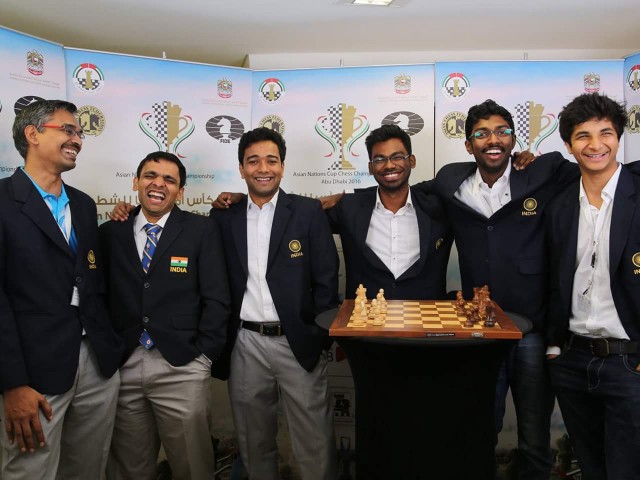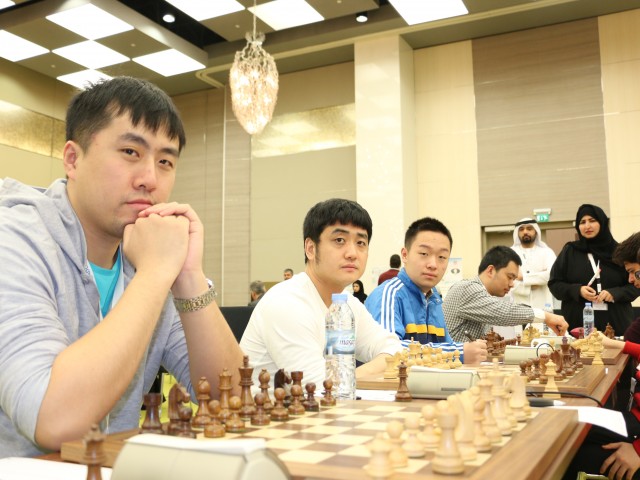5 SIMPLE STEPS TO BECOME A CHESS MASTER
Before we begin let us take a short
history class…
BRIEF HISTORY OF CHESS
What are the origins of the
royal game? I will try to create a brief overview with as accurate information
as possible.
500 – It is widely acknowledged
that chess originated from India around this time.
500-600 – Chaturanga, a
four-player war-related board game, flourishes in north-western India. This
game is the “earliest precursor” to chess because it had two features that made
it stand out from the crowd – different pieces had different abilities (as
opposed to a game like checkers) and victory was centred around what we know as
the king in modern chess.
600-640 – Historians believe
chaturanga was gradually altered into shatranj, a two-player game, which became
popular in northern India, Afghanistan, Pakistan and southern parts of Central
Asia. After the Arabs took control of Persia in the 640’s, the rules of ‘chess’
(which probably went by another name) spread across Persia and neighbouring countries.
700 – Muslims invade Spain and
introduce chess there.
750 – Chess reached China via
Silk Road traders and Buddhist pilgrims, where they likely started to label the
pieces on “inscribed disks” and placed pieces on the intersections of lines
rather than inside squares. This probably evolved into the modern game of Chinese chess or XiangQi.
750-900 – Muslims took chess to
North Africa and Sicily.
900 – The oldest recorded chess
game is written in a manuscript. The game was between a Baghdad historian and a
pupil.
900-1000 – The Vikings
established the game in England and Iceland.
 1000 – Chess is introduced to
Japan and Korea. The game was also spread far throughout Europe as far north as
Scandinavia. At this time, chessboards were often made of fine wood or marble.
1000 – Chess is introduced to
Japan and Korea. The game was also spread far throughout Europe as far north as
Scandinavia. At this time, chessboards were often made of fine wood or marble.
1300 – The pawn acquires the
ability to move two squares from its original square, although this was not
fully assimilated into Europe until 300 years later.
1400 – Chess becomes known as
the “royal game” as it was popular among nobility.
1475 – The counsellor was
replaced by the modern queen, hence increasing the value of a pawn (due to its
potential promotion to a queen). The chaturanga/shatranj piece called the
elephant was replaced by the bishop. The rules of castling and en passant are
introduced, but not widely accepted.
1620 – Gioacchino Greco, an
Italian master, wrote about contrasting approaches to chess. He emphasised
tactics and his games made a significant contribution on popularising chess.
1700 – Castling and en passant
are acknowledged.
1749 – François-André Philidor
of France, possibly the world’s best chess player for nearly 50 years, wroteL’Analyze
des échecs (Chess Analyzed), a highly influential book.
1800 – The rook is universally
acknowledged. Previously, in Russia it was a sailing ship and in other places,
a warrior inside a chariot.
1849 – What would later be
known as the Staunton chess set (a standard for international competition
today) is patented.
1850 – Many minor disputes
about the rules of chess are fixed up. An example is that it was sometimes
unacceptable to promote a pawn to a queen if one already had a queen on the board.
1900 – Chess goes through
explosive growth as players began to play professionally, prizes were larger
and world championships were on offer. (In addition, your guide to this brief
history of chess is born in this century.)
I laced together this timeline
with information from Encyclopædia Britannica and World Book. There were minor
conflicts in some of the information, but generally, the timeline worked out
quite well.
Source:
http://chess.geniusprophecy.com
STEP 1
To learn the game of chess, you have
to get yourself a Chessboard
The game of chess is played on an 8 x 8 checkered board and
every spot on the board are marked for record purposes and learning. The
horizontal lines are marked ‘a-h’ or ‘A-H’, while the vertical lines are marked
‘1-8’. Therefore, it is not out of place to say that to learn chess one must first
get a chessboard because chess books and other study guide are full of
annotated diagrams using these board markings to describe and analyze game play
in PGN (Portable Game Notation) format. There are several different types of
chessboards and chess pieces, some are made from glass, wood, ivory, electronic
and polymer (rollup); they also come in various sizes and colors, this
determines how valuable the chessboard can be. There are many places to go to
purchase a chessboard:
a) There are several good deals online. You can purchase
a chessboard from #1,500 to #5500. To view variety of boards online CLICK
HERE for the best deals
b) The Electronic
chessboard is one of the best learning tools as it automatically outputs
PGN reports and the games can be printed as PGN for analysis.
c) For exotic chessboards and pieces (Some
are antiques and decorative) CLICK
HERE
STEP 2
Get yourself a trainer or join a
Chessclub
Joining a
chess club can be very useful. You get to interact with other players; you also
get access to the best coaches. This can provide you with the latest news of
events in chess and can also be a source of motivation. There are several clubs
and academies all over the country. Examples are Abuja Chess
Club, Team Nigeria, Ilorin
Chess Academy and a host of others. This interaction with other chess
players is sure to improve your game.
STEP 3
To advance from Amateur to Beginner,
get yourself a Smartphone
For some
people, a smartphone is a very good option compared to a chessboard; with a
smartphone, you can play chess from many apps with tactics lesson and game
analysis. There are apps for different platforms but the best is Chess.com for both Windows Android
an IOS.
Learn chess strategies!
On blackberry you can download ‘LS Chess’ from the BB app store. The
basic requirement for Chess app is a smartphone with 1G RAM. Smartphones are
expensive, but for the best buy and affordable prizes CLICK
HERE
STEP 4
Join online chess platforms and
practice everyday
STEP 5
Download eBooks and other resources
online and still practice everyday
 1000 – Chess is introduced to
Japan and Korea. The game was also spread far throughout Europe as far north as
Scandinavia. At this time, chessboards were often made of fine wood or marble.
1000 – Chess is introduced to
Japan and Korea. The game was also spread far throughout Europe as far north as
Scandinavia. At this time, chessboards were often made of fine wood or marble.


























































































